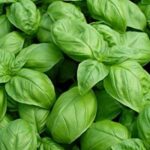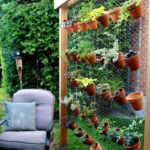Are you interested in creating a beautiful and functional garden, but have limited space or are new to gardening? Look no further than pallet gardening ideas. Pallet gardening offers a unique and affordable way to grow your own plants, herbs, and vegetables, making it an excellent option for small spaces or beginner gardeners. In this article, we will explore everything you need to know about pallet gardening, from choosing the right pallet to creative DIY projects using pallets.
Pallet gardening involves using old wooden pallets as a base for creating vertical gardens, making it ideal for those with limited outdoor space. By utilizing vertical space, pallet gardens allow you to maximize your growing area while adding a unique and decorative element to your outdoor space. Whether you want to grow flowers, herbs, or vegetables, pallet gardening is an innovative and sustainable option that can easily be adapted to fit your specific needs.
In the following sections, we will delve into the world of pallet gardening, starting with tips for selecting the best pallets for gardening. We will then provide step-by-step instructions on how to prepare your pallet for gardening, including cleaning, sanding, and treating the wood. Additionally, we will explore creative ideas for utilizing vertical space with pallets and provide detailed planting techniques and maintenance tips for keeping your pallet garden healthy and thriving.
If you’re looking for inspiration or fun DIY projects using pallets, we’ve got you covered. So read on to discover the endless possibilities of pallet gardening.
Choosing the Right Pallet
When it comes to pallet gardening ideas, the first step is selecting the right pallet for your project. Choosing the right pallet is crucial as it will serve as the foundation for your garden. There are a few considerations to keep in mind when selecting pallets for gardening.
Size
The size of the pallet is an important factor to consider when planning your garden. Larger pallets provide more space for planting, while smaller ones are more manageable for beginners or those with limited space. Consider the area where you plan to display your pallet garden and choose a size that fits the space appropriately.
Condition
The condition of the pallet is also an important factor. Look for pallets that are in good condition, without rot or damage. Avoid using pallets that have been treated with chemicals, as these can be harmful to plants and soil. Inspect each pallet carefully before making a selection.
Type of Wood
Different types of wood are used to construct pallets, and some are more suitable for gardening than others. Hardwood pallets are generally preferred over softwood, as they tend to last longer and hold up better in outdoor conditions. Additionally, hardwood is less likely to have been treated with harmful chemicals, making it a safer choice for gardening purposes.
By taking these factors into consideration when choosing your pallet, you can ensure that you select the best option for your gardening project. With the right pallet in hand, you’ll be ready to move on to preparing and planting your garden.
Pallet Preparation
Pallet gardening is an innovative and efficient way to grow your own herbs, flowers, or vegetables, even with limited outdoor space. Choosing the right pallet for your gardening project is crucial for its success. Here are some tips on how to prepare your pallet for gardening:
1. Cleaning: Before using a pallet for gardening, it’s essential to clean it thoroughly. Use a brush and soapy water to remove any dirt, debris, or other contaminants from the surface of the wood. Pay special attention to areas where soil and moisture may have accumulated during previous use.
2. Sanding: Once the pallet is clean and dry, sanding the wood will help create a smooth surface and prevent splinters. Be sure to sand all sides of the pallet, including edges and corners. Start with rough-grit sandpaper and gradually move to finer-grit sandpaper for a polished finish.
3. Treating the Wood: To prolong the lifespan of your pallet garden, it’s important to treat the wood against moisture and rot. There are various options for protecting the wood, such as using a waterproof sealant or applying a coat of outdoor paint or stain. Make sure to choose products that are safe for plants and soil.
By following these step-by-step instructions for preparing your pallet for gardening, you can ensure that your plants have a healthy environment to grow in while also providing a sturdy foundation for your vertical garden design or other pallet gardening ideas.
Vertical Pallet Garden Ideas
Pallet gardening is a fantastic way to make the most of limited space, and when it comes to vertical gardens, the possibilities are truly endless. Whether you’re looking to create a lush hanging garden, a space-saving wall-mounted design, or a unique tiered display, pallets offer a versatile and affordable solution for gardening in small areas. Here are some creative ideas for utilizing vertical space with pallets:
- Hanging Gardens: Use sturdy hooks or chains to suspend a pallet horizontally from a ceiling or pergola, then add shallow planters or pockets to the slats. This can create a stunning overhead display and is an ideal solution for growing cascading plants and flowers.
- Wall-Mounted Pallets: Hang pallets vertically on an exterior wall or fence to create a living wall of greenery. This could be used as a backdrop for outdoor entertaining areas or simply as an eye-catching feature in your garden.
- Tiered Designs: By stacking multiple pallets on top of each other at different angles, you can create an attractive tiered garden that maximizes growing space while adding visual interest. Each level can be planted with different types of flowers, herbs, or vegetables for added variety.
These are just a few examples of how you can transform ordinary pallets into stunning vertical gardens. Get creative and experiment with different arrangements to find the perfect design for your space.
Pallet Planting Techniques
A pallet garden is a great way to maximize limited space and grow a variety of plants, herbs, and flowers. When it comes to choosing the right plants for your pallet garden, there are a few key techniques and considerations to keep in mind.
Proper Plant Selection
When planning out your pallet garden, it’s important to choose plants that will thrive in a vertical environment. Look for compact or trailing varieties of herbs, vegetables, and flowers that won’t overcrowd the limited space. Some popular choices for pallet gardens include strawberries, lettuce, succulents, and aromatic herbs like thyme and rosemary. It’s also essential to consider the amount of sunlight your pallet garden will receive and select plants accordingly.
Arranging Your Plants
Once you have selected your plants, it’s time to arrange them within the pallet structure. Consider the mature size of each plant and make sure to space them out accordingly to prevent overcrowding. You can get creative with your arrangements by mixing different types of plants for visual interest. Additionally, consider incorporating some trailing or cascading plants towards the edges of the pallet to create a lush and full look.
Drainage and Soil Selection
Since pallet gardens typically have limited depth for soil, it’s crucial to select well-draining soil that won’t become waterlogged. Consider using a mix specifically formulated for container gardening or add perlite or coarse sand to improve drainage. When planting in a vertical structure like a pallet garden, ensuring proper drainage is essential for preventing root rot and promoting healthy plant growth.
By following these planting techniques and tips for proper drainage and soil selection, you can create a thriving and beautiful pallet garden that maximizes the available space while allowing you to grow an array of plants in an innovative way.
Pallet Garden Maintenance
Pallet gardening is a popular and eco-friendly way to grow plants in a small space. Not only is it a great option for beginners, but it also allows for creativity and innovation when it comes to design and maintenance. One of the key factors in maintaining a thriving pallet garden is proper watering techniques.
Overwatering or underwatering can both have detrimental effects on your plants, so finding the right balance is crucial. Consider using a soaker hose or drip irrigation system to ensure that your plants get the right amount of water without wasting it.
Fertilizing is another important aspect of pallet garden maintenance. Since pallet gardens are typically smaller in size, they may require more frequent fertilization than traditional gardens. Consider using organic fertilizers to keep your plants healthy and free from harmful chemicals. Be sure to follow the instructions on the fertilizer package carefully to avoid over-fertilizing, which can damage your plants.
Pest control is also an essential part of maintaining a healthy pallet garden. Keep an eye out for common pests such as aphids, snails, and caterpillars, and take proactive measures to prevent infestations. This may include using natural pest repellents, removing affected leaves or plants, or introducing beneficial insects like ladybugs to help control pest populations.
| Aspect | Tips |
|---|---|
| Watering | Consider using a soaker hose or drip irrigation system |
| Fertilizing | Use organic fertilizers and follow instructions carefully |
| Pest Control | Keep an eye out for common pests and use natural pest repellents if needed |
Creative Pallet Garden Designs
When it comes to pallet gardening ideas, there are endless possibilities for creating unique and eye-catching designs that will make your space stand out. One of the first considerations when designing your pallet garden is the color combinations you want to incorporate.
This can be based on personal preference, or you can choose color schemes that complement your existing outdoor decor. For example, if you have a lot of greenery in your yard, you might opt for a pallet garden with vibrant pops of color to create contrast.
Another essential aspect of creating an aesthetically pleasing pallet garden is choosing the right plants. Consider the amount of sunlight your garden receives and choose plants that thrive in those conditions. You can also play with different textures and heights to add visual interest to your garden design. Additionally, incorporating edible herbs or vegetables into your pallet garden not only adds a practical element but also brings vibrant colors and varied foliage to the mix.
In addition to plant choices and color combinations, decorative elements can enhance the overall look of your pallet garden. Incorporating hanging baskets, fairy lights, or small decorative sculptures can add personality and charm to your outdoor space. There are also various ways to personalize your pallets by painting them, adding stenciled designs, or attaching hooks for hanging accessories.
| Plant Choices | Color Combinations |
|---|---|
| Succulents | Earthy tones (green, beige, tan) |
| Herbs (rosemary, basil, thyme) | Complementary colors (purple, yellow) |
| Wildflowers | Bright & Bold (pink, orange, blue) |
Pallet Garden DIY Projects
In conclusion, pallet gardening offers a creative and sustainable way to grow plants, even in small spaces. With the right pallet selection, preparation, and planting techniques, anyone can create a beautiful and functional garden using this versatile material. Vertical pallet garden ideas allow for innovative ways to maximize space, while proper maintenance and attention to design details can result in stunning and unique pallet garden designs.
One of the most exciting aspects of pallet gardening is the opportunity for DIY projects. Utilizing pallets to create practical items such as compost bins or outdoor furniture not only adds functionality to your garden but also contributes to upcycling and environmental sustainability. Whether you’re looking to add a birdhouse for feathered friends or a cozy seating area for yourself, the possibilities for creating with pallets are endless.
As you explore various pallet gardening ideas and embark on your own projects, don’t underestimate the potential of this humble material. The beauty of DIY projects using pallets lies in their ability to infuse personality and character into your garden space while simultaneously reducing waste. So go ahead, get creative, and see how you can elevate your gardening experience with these fun and practical DIY ventures.
Frequently Asked Questions
What Plants Do Well in a Pallet Garden?
Many plants thrive in a pallet garden, including herbs like basil, mint, and rosemary. Vegetables like lettuce, radishes, and tomatoes also do well. Flowers such as petunias and marigolds can add color to the space.
What Can You Make Out of Pallets for Gardening?
Pallets can be repurposed into various gardening structures, such as vertical planters for small spaces or raised beds for growing vegetables. They can also be used to create compost bins or even a sturdy work surface for potting plants.
Are Pallets Good for Gardening?
Pallets can be good for gardening when used properly. They provide an affordable and sustainable way to create raised beds or vertical gardens.
However, it’s important to choose pallets that have not been treated with harmful chemicals and to prepare them correctly before use in the garden. Overall, with some precautionary measures, pallets can be a great resource for gardening projects.

Welcome to my gardening blog! I am passionate about plants and enjoy sharing my knowledge and experiences with others. In this blog, I will write about everything related to gardening, from tips on how to get started to updates on my own garden projects.





